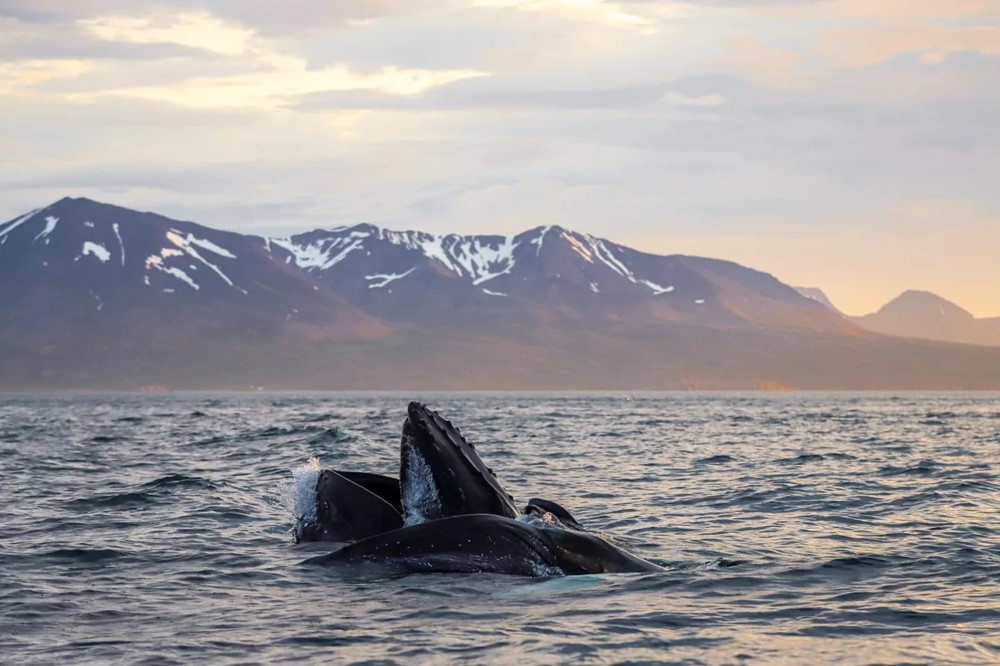THE POWER OF KRILL

Krill are small crustaceans and are found in all the world's oceans. Krill look shrimp-like with a size of about 2 inch / 5cm. All together, there's 86 krill species worldwide.
Alongside small schooling fish and plankton, krill are among our whales' main diet.
Oftentimes in the evenings, we see humpback whales feed close or even right below the surface. They come up with their mouth widely open, trying to catch as much prey at once as possible. A flock of birds might follow them, trying to catch the prey that has escaped the whales' mouth. The whales will be surfacing over and over, barely leaving for longer dives, filling up their mouth with food every minute.
The reason behind this occurance is that krill migrate towards the surface at that time of the day. It's known as diurnal vertical migration during which the krill leaves the deeper waters and moves further up to feed on nutrient-dense phytoplankton before then sinking back down again. Some species of krill do this journey 2-3 times a night.
Even though another reason behind this migration is the avoidance of predation, these small animals are providing food for predators near the surface at night and hence in deeper waters during the day.
When it comes to our hungry whales, the migration of krill logically affects the surface and feeding behaviour of these gentle giants. Whilst usually leaving for 5-10 minutes dives during daytime and taking several breaths on the surface once back up, they might not leave for a deep dive at all in the evenings, therefore just taking one breath every time they return with a mouth full of food.
Once krill has finished feeding it will slowly sink down again. In fact, krill starts to sink down automatically once it stops moving / swimming forward. These animals will move less the more sated they are, which means those which fed most will eventually sink below the rest. The deeper they sink, the less they'll move, which is to preserve energy and to avoid the attention of predators.
Some studies suggest, that collectively seen, the migrations of dense swarms of krill could have a significant effect on ocean mixing, which in turn is crucial for the well-being of the ocean ecosystems, their productivity and balances.
- Sarah



